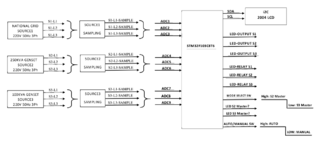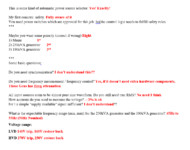mcmsat13
Member level 5
Hello house! As a part of learning new things everyday in life, electronics is not left out. Everyday I see that electronics has many ways of getting one result with many different means.
Please I want to know if one can really use some chips like AD736, AD737 and LTC1968 to read AC voltage?
For example my city grid if 220VAC nominal, Can I use these RMS to DC converter chips to really measure the input AC Voltage just as in AC Digital Voltmeter(1602 LCD) with Arduino?
Please I really need to confirm this
Please I want to know if one can really use some chips like AD736, AD737 and LTC1968 to read AC voltage?
For example my city grid if 220VAC nominal, Can I use these RMS to DC converter chips to really measure the input AC Voltage just as in AC Digital Voltmeter(1602 LCD) with Arduino?
Please I really need to confirm this

